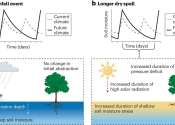Here's why experts don't think cloud seeding played a role in Dubai's downpour
With cloud seeding, it may rain, but it doesn't really pour or flood—at least nothing like what drenched the United Arab Emirates and paralyzed Dubai, meteorologists said.









